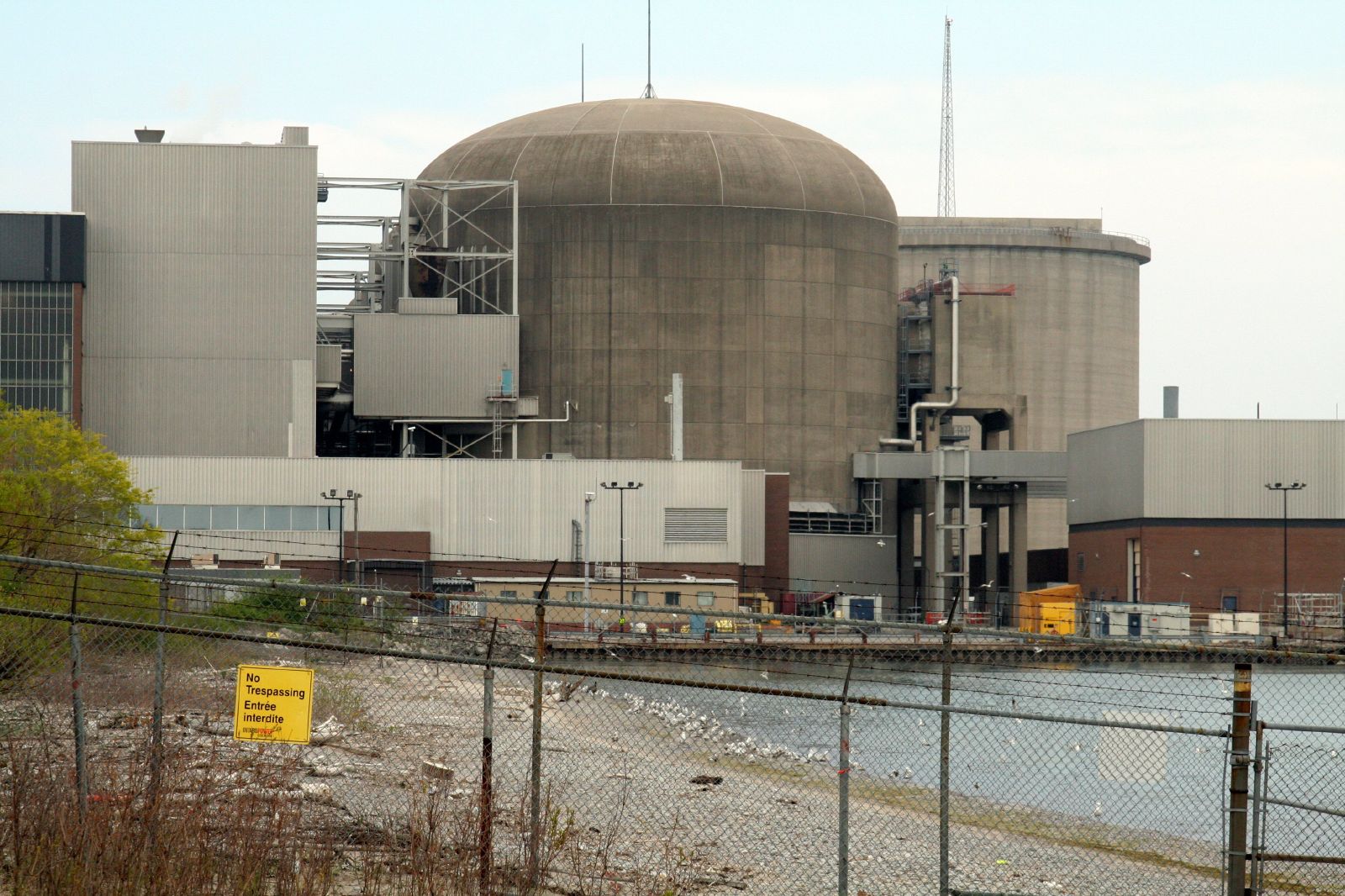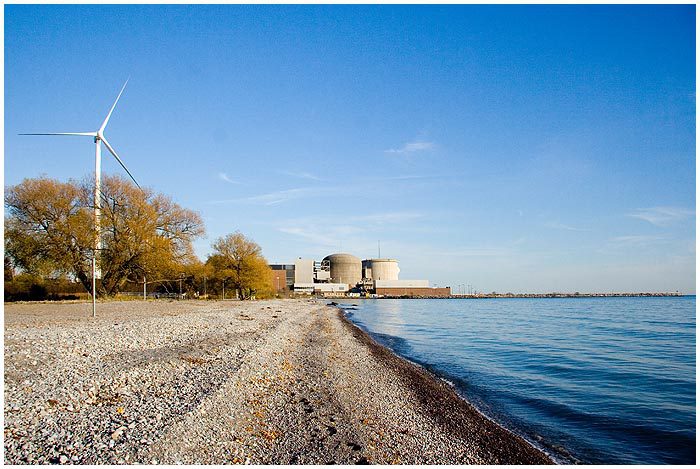Were you one of the millions of people who got a literal wake-up call on Sunday when your phone buzzed with a warning about an incident at the Pickering nuclear station? And even though the warning was an error, did you begin imagining the impacts of a nuclear disaster close to home?
Sunday’s false warning was also the first time many in Greater Toronto Area realized that they were living close to a nuclear power plant. And less than 48 hours later, we all found out that the aging nuclear power plant’s retirement would be extended yet again, despite an original retirement date of 2014. It’s no wonder Ontarians placed more than 30,000 orders for potassium iodide pills this week.


No matter how you feel about having a nuclear power plant within 30 km of 2.2 million people, this recent scare raises important questions: Does Ontario need nuclear power to maintain a low-carbon electricity grid? Or is it possible to shift to other low carbon sources of electricity that don’t send half of the province into a state of panic?
The short answer is that there are clean, safe, affordable, and quick-to-build alternatives powering much of Ontario’s electricity grid right now. While we can’t immediately flip a switch to take nuclear offline, the technology exists right now to transition towards clean alternatives like wind, solar, and hydro power. When combined with smart and affordable ways to store energy, these sources could be ramped up to power a clean, affordable grid in Ontario’s not-so-distant future.
This course correction needs to happen quickly to fill a looming gap in Ontario’s electricity supply. The Pickering nuclear station provides a whopping 14 per cent of Ontario’s current electricity needs. With the aging plant slated for retirement around 2025 and other big nuclear plants up for refurbishing, Ontario has an opportunity to invest in clean alternatives.
Filling this gap is a critical decision point for Ontario’s energy future. The current contingency plan seems to be to ramp up natural gas plant activity to meet demand, which could more than triple greenhouse gas emissions from the electricity sector by 2035. Ontario has also shown interest in pursuing small modular nuclear as a solution to meet future electricity needs, which would be an expensive and unproven choice.
A much smarter choice would be for Ontario to continue the transition to clean electricity we began many years ago. Prices for wind and solar power are dropping every year, so this makes more sense than ever before. For example, the wind power project just cancelled in eastern Ontario would have provided clean power at about 7 cents per kilowatt hour (kWh), cheaper than the average price of nuclear power in Ontario at 9 cents per kilowatt hour. Many provinces are now bringing in new wind and solar contracts at record low prices – in Alberta, both wind and solar were picked up for under 5 cents per kWh in 2018 and 2019.
There’s also hydro power from our next door neighbour. Quebec offered to sell hydro power to Ontario at 5 cents per kWh in 2017. Despite these low-cost renewable energy options, Ontario insists on spending our tax dollars to cancel renewable energy projects and keep us in the past.


Meanwhile, nuclear is getting more expensive. Ontario Power Generation has indicated that it will need to raise its price of nuclear power to 16.5 cents per kWh in 2025 to pay for the re-building of the Darlington Nuclear Station. Prioritizing nuclear power is not the recipe to lower electricity costs in Ontario.
It’s time to wake up to where clean energy is now, instead of where it was ten years ago when Ontario brought in the Green Energy Act. New technology means that storing energy for when the wind isn’t blowing and the sun isn’t shining has become much cheaper. So much cheaper that an academic study recently found that “it’s possible to meet Ontario’s electricity demands with just a combination of renewables, including hydropower, and storing electricity in batteries.”
The price tag is good news too – much better news than fixing up old nuclear plants. “We also found that dealing with the intermittency of wind and solar energy by adding batteries would be more economical than refurbishing nuclear plants in the foreseeable future, well before the current refurbishment projects are completed.” This is because the cost of battery technology has come down rapidly in recent years alongside the price of generating renewable energy. What was out of reach a decade ago is now a viable and cost-effective pathway.
There is clear evidence that Ontario would be better off with a shift to clean electricity – real clean electricity that doesn’t lean on more nuclear or increasing the use polluting natural gas. Let’s see this Pickering incident as a wake-up call to change course. Let’s build an electricity grid that lets us sleep at night.






